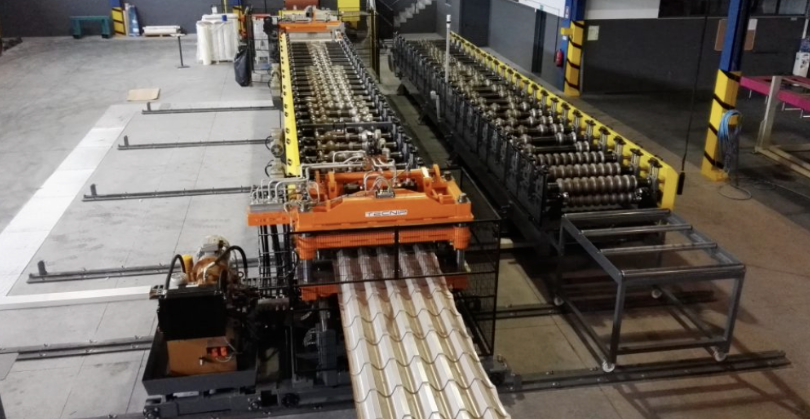
Posted on Friday, October 11, 2024
As Australia continues to evolve as a competitive manufacturing hub, automation in roll forming operations is becoming increasingly essential. Automated roll forming machines not only streamline production processes but also enhance productivity, quality, and flexibility within the manufacturing landscape. Here’s how automation is transforming the roll forming industry in Australia:
Automated roll forming machines significantly reduce the time required for setup and production. With features such as programmable controls and advanced sensors, these machines can quickly adjust to different production runs, allowing manufacturers to produce various profiles without lengthy downtimes. This efficiency translates to higher output rates, enabling companies to meet growing demands without compromising quality.
Automation brings a level of precision and consistency that manual processes often struggle to achieve. Advanced roll forming machines equipped with smart technology can monitor various parameters during production, such as material thickness, feed rates, and forming pressures. This capability helps maintain uniform product quality, reducing the risk of defects and minimizing waste. In a market where quality assurance is critical, this reliability enhances the reputation of Australian manufacturers.
One of the most significant advantages of automated roll forming is the ability to easily switch between different product designs. With the integration of computer numerical control (CNC) technology, manufacturers can adjust machine settings through software interfaces, allowing for quick changes to production lines. This flexibility is crucial for Australian companies looking to adapt to market trends and customer needs swiftly.
While initial investments in automation can be substantial, the long-term cost savings are significant. Automated machines reduce the reliance on manual labor for repetitive tasks, allowing skilled workers to focus on higher-value activities, such as design and troubleshooting. In a competitive labor market like Australia’s, where skilled labor can be hard to find, automation helps manufacturers optimize their workforce and reduce labor costs.
Automation also enhances workplace safety. With fewer workers needed on the production floor, the risk of accidents related to manual handling and operation is minimized. Automated systems can take over dangerous tasks, ensuring that employees are safer while still maintaining high productivity levels.
Modern automated roll forming systems often come equipped with data analytics capabilities, allowing manufacturers to gather insights on their production processes. By analyzing this data, companies can identify inefficiencies, predict maintenance needs, and optimize workflows. This data-driven approach supports continuous improvement, enabling manufacturers to stay competitive in the evolving Australian market.
The integration of automation in roll forming operations is a game-changer for Australian manufacturers. By enhancing efficiency, improving quality, and providing greater flexibility, automated roll forming machines position companies to respond rapidly to market demands and maintain a competitive edge. As technology continues to advance, embracing automation will be vital for the future of the roll forming industry in Australia, paving the way for increased innovation and growth.

32/1000 Box Profile Roll Forming Machine – Complete Guide & Specifications
Posted on Sunday, November 16, 2025
High-performance 32/1000 box profile roll forming machine for roofing and cladding. Full specifications, profiles, applications, pricing

PBR / R-Panel Roll Forming Machine – Complete Guide & Specifications
Posted on Sunday, November 16, 2025
PBR / R-Panel roll forming machine for roofing and wall cladding. Full specs, profiles, applications, pricing, and global buying guide. Built to order.

Posted on Sunday, November 16, 2025
How to Diagnose and Fix the Hidden Electrical Problems That Cause Downtime
Copyright 2025 © Machine Matcher.